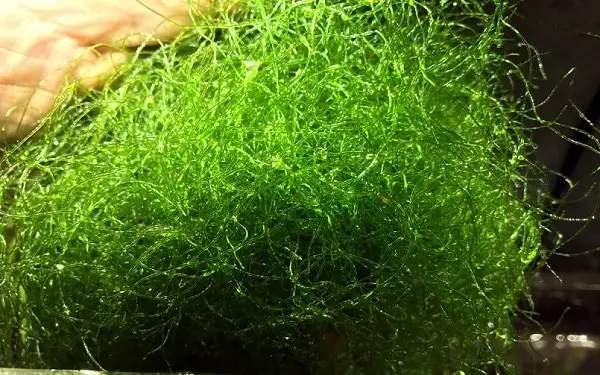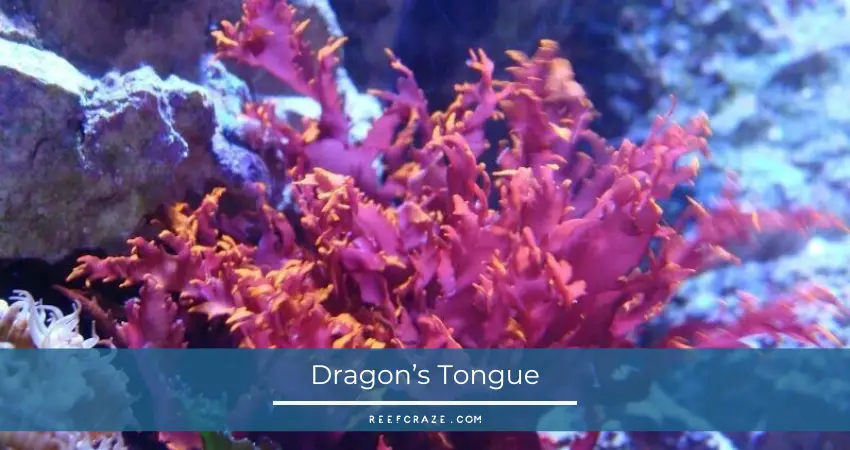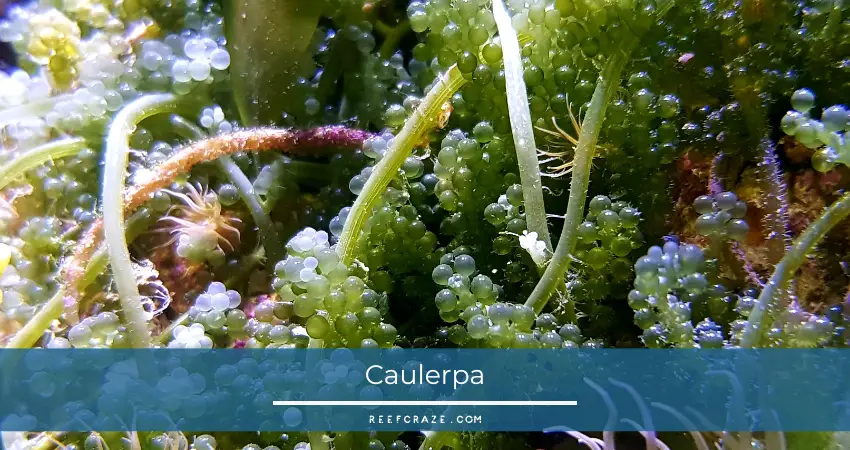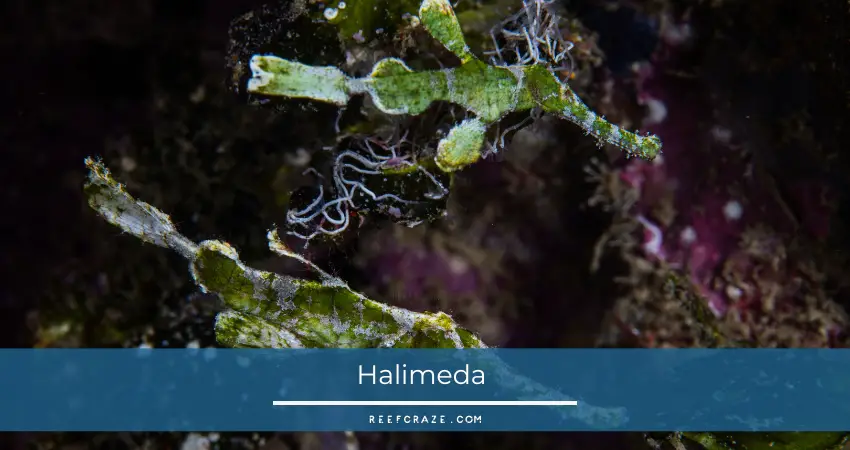A refugium is an integral component in any saltwater or reef tank. It’s a self-sustaining system in your tank that balances all the minerals in the water and reduces toxin buildup. But to ensure that your refugium works as intended, you have to pick the right macroalgae for it.
To get a fully functional toxin and metal ions filtration system, you’ll need at least 4 macroalgae in your refugium. The best combination is Chaetomorpha, Dragon’s Tongue, Caulerpa, and Halimeda. These will prevent toxicity, carbon dioxide, metallic ions, and compound buildup, balance minerals, and chemicals, and produce oxygen.
If you want to dive deeper into macroalgae and how to incorporate them into your refugium, you don’t have to look hard. I’ve covered these macroalgae at length here, talking extensively about their features and functions.
![What To Put In A Refugium: [Best Macroalgae For A Refugium]](https://reefcraze.com/wp-content/uploads/2022/11/Best-Macroalgae-For-A-Refugium.jpg)
What Is A Refugium?
A refugium is an isolated space inside your reef or saltwater tank that shares the same water. It typically contains lifeforms that are beneficial to your main tank but wouldn’t survive in the same conditions. It can contain natural food sources, denitrifying organisms, and photosynthesizers. A refugium can also have opposing light cycles and slower water flow to contrast and balance out the pH in your main tank water.
The concept of a refugium can get quite confusing to understand and harder to create. In truth, the process is far from convoluted. Once you get it going, it can sustain itself and your main tank’s environment by itself.
Do I Absolutely Need Macroalgae In My Tank?
You probably have a sump in your saltwater or reef tank, and it’s full of gizmos that keep your water toxin-free, pH and KH stable, and mineral balanced. Naturally, you won’t want to bother with a seemingly inferior solution for the same needs. Especially macroalgae would seem a touch problematic, considering algae is typically harmful to your fish.
But the right macroalgae can do what your sump struggles to achieve and more without the need for constant maintenance. These are the general benefits of having macroalgae in your refugium.
- Low cost.
- Nitrate reduction and nitrite buildup.
- Phosphate reduction builds up.
- Curbing copper content in water.
- Balancing metals and minerals.
- Consuming carbon dioxide to create oxygen.
- Creating a natural habitat for your smaller fish.
- Providing an aquatic background and enhancing aesthetics.
- Self-sustaining.
- Low maintenance efforts.
Once you get a refugium going, the macroalgae in it will take care of themselves and have an overall positive impact on your tank environment. It reduces the effort you have to spend behind your tank, so it is a must-have in every reef or saltwater tank.
What Macroalgae Are The Best For My Refugium?
A single type of macroalgae will not be enough for your refugium. Most macroalgae stop nitrate and nitrite buildup, but many have other attributes which you’ll need to make a comprehensive system. So, it’s best to always have at least 4 different types of macroalgae in a refugium.
If you want to have the best combination without cramming in too many types, I recommend these 4 macroalgae.
- Chaetomorpha.
- Dragon’s Tongue.
- Caulerpa.
- Halimeda.
1. Chaetomorpha

Chaetomorpha is the most commonly found macroalgae in the refugium. It’s a saltwater alga that looks like bigoli or yarn. Its popularity comes from its inexpensiveness, aesthetic value, and functions. You can find three colors of Chaetomorpha: green, brown, and red.
If you use Chaetomorpha, you’ll enjoy these 4 benefits for your tank.
- Chaetomorpha functions as a natural filter for nitrate, nitrites, and phosphates. These are the toxic chemicals that build up in your tank as your fish defecate. It feeds on these and removes them from your tank, growing without needing any additional food.
- Chaetomorpha can be a natural habitat in your refugium. Small starfish and copepods can make their homes in it. It provides a natural underwater look to your fish tank.
- Chaetomorpha also doesn’t have a sexually active stage as it grows. Many algae will spread their spores in the water, allowing them to breed. The spores can cause breathing issues for your fish and create an imbalance of elements in the water. With Chaetomorpha, you won’t have to risk your fish.
- It doesn’t add any extra maintenance. All Chaetomorpha requires is a slow, steady water flow with a source of light. As it feeds on toxins, you don’t have to worry about food. You only have to prune about a third of it each week once it is fully grown.
Chaetomorpha is a must-have in your reef or saltwater tank if you want to make your refugium an efficient and self-sustained toxin cleaner. It is very cheap, coming in at under $4. And you don’t need more than a tennis ball equivalent size to get started.
2. Dragon’s Tongue

Dragon’s Tongue is added to a refugium more for its aesthetic value, but it has many benefits. It’s a powerful chemical filter that neutralizes more types of toxins than Chaetomorpha and also neutralizes metals. You’ll get the following benefits from including it in your collection of macroalgae.
- Dragon’s Tongue provides a vibrant, coarse, natural aesthetic to your refugium. Its electric color and texture can elevate how your tank looks to an entirely new dimension.
- It can filter nitrate, nitrites, phosphates, and ammonia from your tank.
- Dragon’s Tongue can also filter out heavy metals from the tank water.
- You don’t have to do much work to sustain it. Dragon’s Tongue will get the necessary food from the magnesium, iron, and other metals in the tank, along with feeding on the toxin produced.
Dragon’s Tongue is as easy to grow in your tank as Chaetomorpha is. It is also compatible with the growth conditions of Chaetomorpha, as it requires indirect water flow along with a light source. Once fully grown, you can trim it to physically remove the toxin and metal buildup in your tank for better water conditions.
3. Caulerpa

Caulerpa is a leafy alga with fast-growing and inhibitive properties. It can enhance your refugium as a powerful filter, algae inhibitor, and a beautiful plant. It provides these advantages when put in your refugium.
- It can act as a potent natural filter, removing nitrates, nitrites, and phosphates.
- It is an aggressive feeder, so it will actively take out any elements that can encourage bad algae buildup.
- It aggressively removes acidic content from your tank, keeping the pH stable.
- It can be fed to herbivore fish such as surgeonfish, angelfish, and sea urchins as well. You have to trim off the rhizomes or roots. But only Caulerpa Taxifolia is deemed safe to eat.
A particular problem with Caulerpa is that it is very aggressive. It feeds and grows fast, and it can reproduce sexually if you don’t trim it well. When sexually active, parts of it can die after reproduction and release the absorbed toxins back into the water.
You can reduce the odds of this happening by using Caulerpa Taxifolia only, as it is less sexually active than other species. However, you need to look for the development of gametangia, or small whisker and thorns being developed on the body. If you see this, prune these off immediately.
The reason why it’s so high maintenance and high risk is also why it’s so effective. It’s recommended for larger reef or saltwater tanks, where the toxin production cannot be regulated with other macroalgae. Caulerpa can take up the load easily, and if you have herbivores that can munch on it, it can work as a convenient food source.
4. Halimeda

Halimeda is a weak nutrient extractor, but it is a good-looking macroalga with some unique properties that your refugium can benefit from. It can act as a detection system for your tank, giving you information about alkalinity and toxin buildup. When put in a refugium, it’ll provide these benefits.
- Halimeda is mostly kept in a tank for its beauty. It’s a cluster of green that is very pleasing to the eye. It’s also not eaten by fish, so it’s not at risk of being maimed.
- It functions as a detector for alkalinity and calcium. It grows when there’s an abundance of calcium and acidic toxins in the water, and under normal conditions, it shows little growth. Just by looking at its size, you can tell if something needs changing.
- Halimeda is the lowest maintenance macroalgae, as it can feed from the tank and needs very little trimming.
- The algae can absorb toxins and calcium, but not by much. It won’t help infiltration greatly, but it does contribute to the process.
Under the right conditions, Halimeda is the detector in your tank. It has a risk of triggering a sexual phase, but it’s so low it is nonexistent. Regardless, if you see the fonds of the algae become white with countless green dots on them, then remove the entire algae as soon as possible.
Final Words
Using the species of macroalgae mentioned in this article, you can create a complete filtration and detection system. Caulerpa and Chaetomorpha are aggressive toxin cleaners, while Dragon’s Tongue can function as a filter for metals and ammonia. Halimeda will be your detection system. With a little pruning and a keen eye, you can get better or equivalent water conditions in your tank than if you had used any artificial means.

